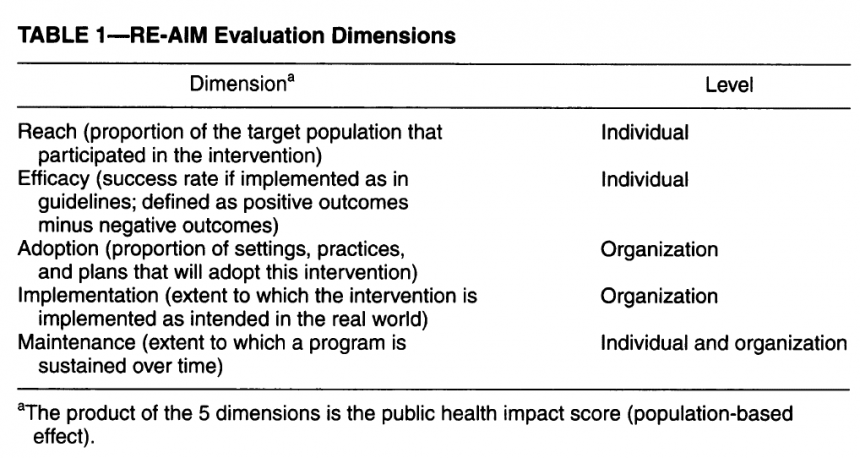The RE-AIM framework, developed by Glasgow et al. (1999), consists of five key evaluation components.
- Reach: This measures the proportion of individuals from a specific population who engage in a program and their characteristics. Reach can be indirect, intended, or direct, and is calculated as the number of participants in the program divided by the target population size.
- Effectiveness: This evaluates both positive and negative program outcomes, including clinical, behavioral, and quality of life outcomes for participants, staff, and payers.
- Adoption: Adoption assesses the percentage of settings and staff that agree to participate in the program, reflecting organizational buy-in.
- Implementation: Implementation assesses how well the program was delivered as intended at individual and organizational levels, considering both adherence and staff engagement.
- Maintenance: Maintenance evaluates the sustainability of outcomes for individuals and programs for organizations in the long term.
The impact of an intervention is a product of its reach and effectiveness, with efficacy playing a crucial role. The RE-AIM framework is essential for evaluating the public health impact of interventions and can be applied to various initiatives.
When using RE-AIM for multifaceted interventions targeting different stakeholders, three approaches can be taken: activity-specific, additive, and hybrid. Each approach offers a way to evaluate the interventions’ impact effectively.
Applying the RE-AIM framework to real-world interventions, such as the SCI Action Canada initiative, provides valuable insights into measuring success and impact. By considering metrics related to reach, effectiveness, adoption, implementation, and maintenance, organizations can better understand the outcomes of their programs.





